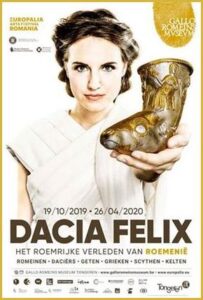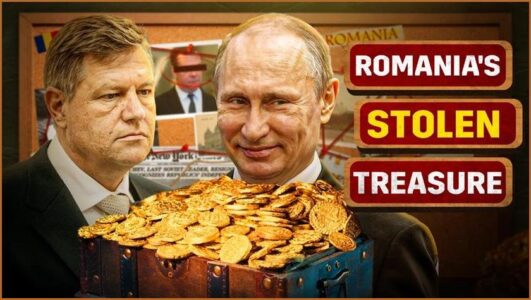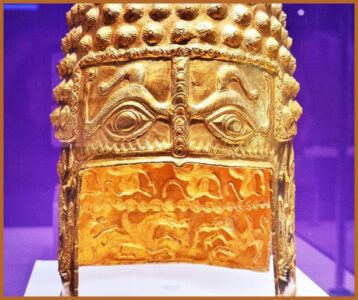It could hardly have escaped your notice. Saturday, Jan. 25, a very brazen burglary at the Drents Museum robbed four masterpieces that were part of the exhibition Dacia – Kingdom of Gold and Silver. A top exhibition that featured more than 600 objects from the ancient Dacian kingdom, including more than 50 gold and silver treasures. The artifacts were on loan from the Romanian National Historical Museum and are considered part of Romania’s National Heritage.
“The helmet from Cotofeneşti, made of almost pure gold and dating back to the 5th century B.C., has deep cultural significance in Romania,” journalists from NL Times wrote, in a publication that elaborated on the theft. “It is more than a theft, it is a very deep wound for the Romanian community,” journalist Claudia Marcu, who visited the exhibition early this month, told Dutch media. She said the impact for Romanians of the theft of heritage pieces would be the same as the theft of Rembrandt van Rijn’s famous painting The Night Watch for the Dutch, reports News.ro.
Cornel Colceru, a Romanian translator who has lived in the Netherlands for over forty years, spoke about the importance of Coţofeneşti’s Coif to national identity. “Every child in Romania learns about this helmet at school. It is the symbol of the Dacians and their treasures,” he said. The Dutch press notes about the Coţofeneşti helmet that it was probably used in ceremonial rituals, describing the piece as solid gold. “It is the symbolism that makes this artifact extraordinary,” said Drents Museum curator Irini Biezeveld in the NL Times.
 It is hoped that the art treasures will also be properly valued by the thieves. The helmet, for example, weighs only 700 grams and represents a gold value of about 70,000 euros. The insured value of the objects is almost six million euros, but this is in fact a symbolic value, as it was never intended to offer the art treasures at auction. The real value, as Romania’s National Heritage is in fact impossible to determine.
It is hoped that the art treasures will also be properly valued by the thieves. The helmet, for example, weighs only 700 grams and represents a gold value of about 70,000 euros. The insured value of the objects is almost six million euros, but this is in fact a symbolic value, as it was never intended to offer the art treasures at auction. The real value, as Romania’s National Heritage is in fact impossible to determine.
The art treasures now stolen were previously on display at the 2019 “Dacia Felix” exhibition at the Gallo-Roman Museum in Tongeren, Belgium, on the occasion of Europalia Rom. The editors of this newsletter were involved in this exhibition, which was broader in scope than the current one in Assen. Apparently, security was better there.
In March through October 2016, these artworks were exhibited at the North Brabant Museum in ‘s-Hertogenbosch- under the name “Masterpieces from Romania” that was co-created the curator of ancient art Paul Huys Janssen and Ben Jager honorary consul of Romania in the Netherlands.
 A resolution was adopted by the European Parliament in 2004, reflecting, among other things: The extent to which Russia was also among the Allies at the time may perhaps complicate this issue.
A resolution was adopted by the European Parliament in 2004, reflecting, among other things: The extent to which Russia was also among the Allies at the time may perhaps complicate this issue.

- whereas the total national property legally placed in Russian custody includes 91.5 tons of gold belonging to the reserve of the Romanian National Bank, as well as royal collections of jewelry and rare
coins, as well as assets of cultural and historical value such as state archives, documents, precious historical manuscripts, heritage paintings, rare books and collections of numerous public and private institutions covering more than five centuries of Romanian history; - whereas the total national property legally placed in Russian custody includes 91.5 tons of gold belonging to the reserve of the Romanian National Bank, as well as royal collections of jewelry and rare coins, as well as assets of cultural and historical value such as state archives, documents, precious historical manuscripts, heritage paintings, rare books and collections of numerous public and private institutions covering more than five centuries of Romanian history;
Whether these decisions will be on the agenda of the big Nato meeting to be held in the Netherlands on June 24 and 25 next, where a tour of a number of cities on the theme of peace and security will call at Assen remains to be seen.

